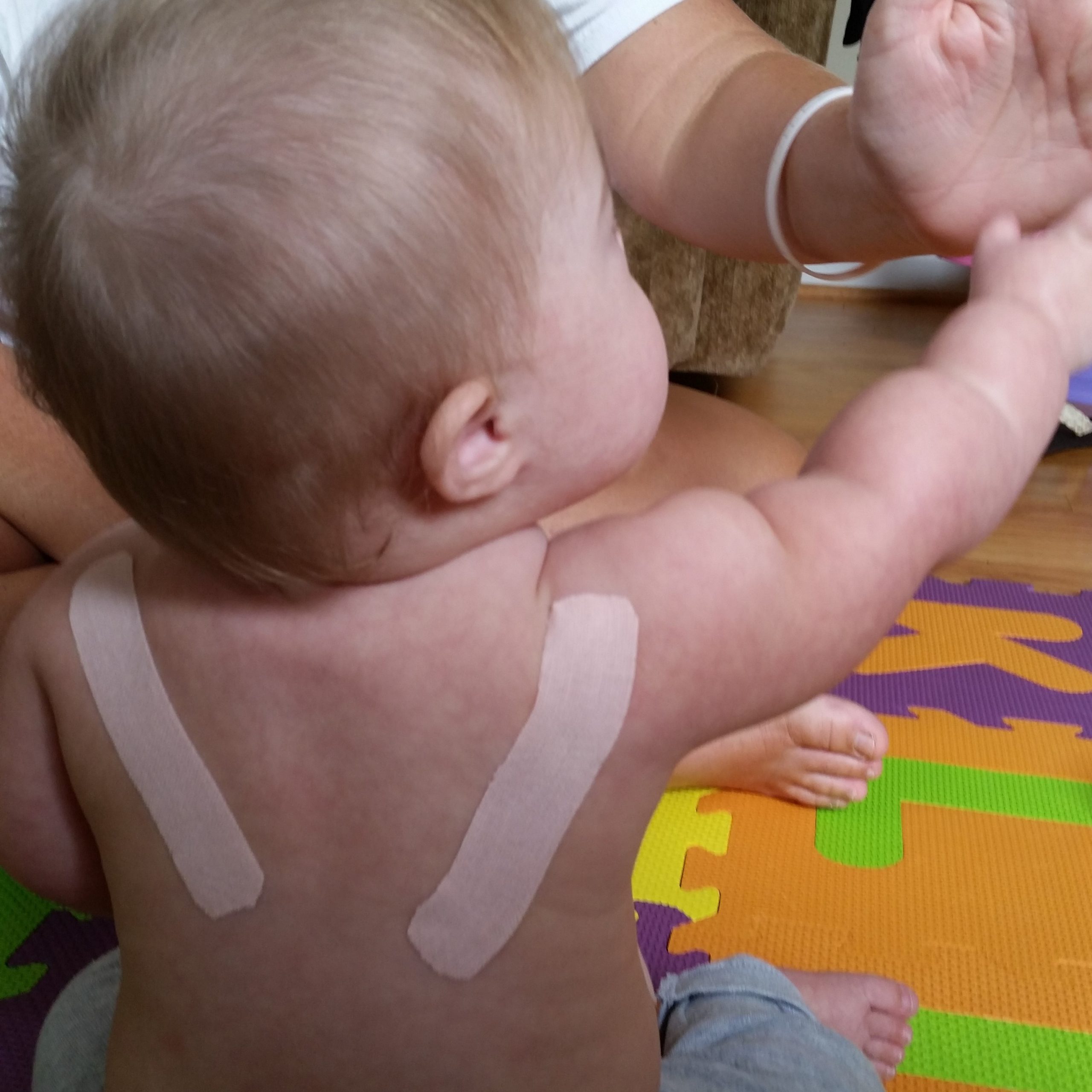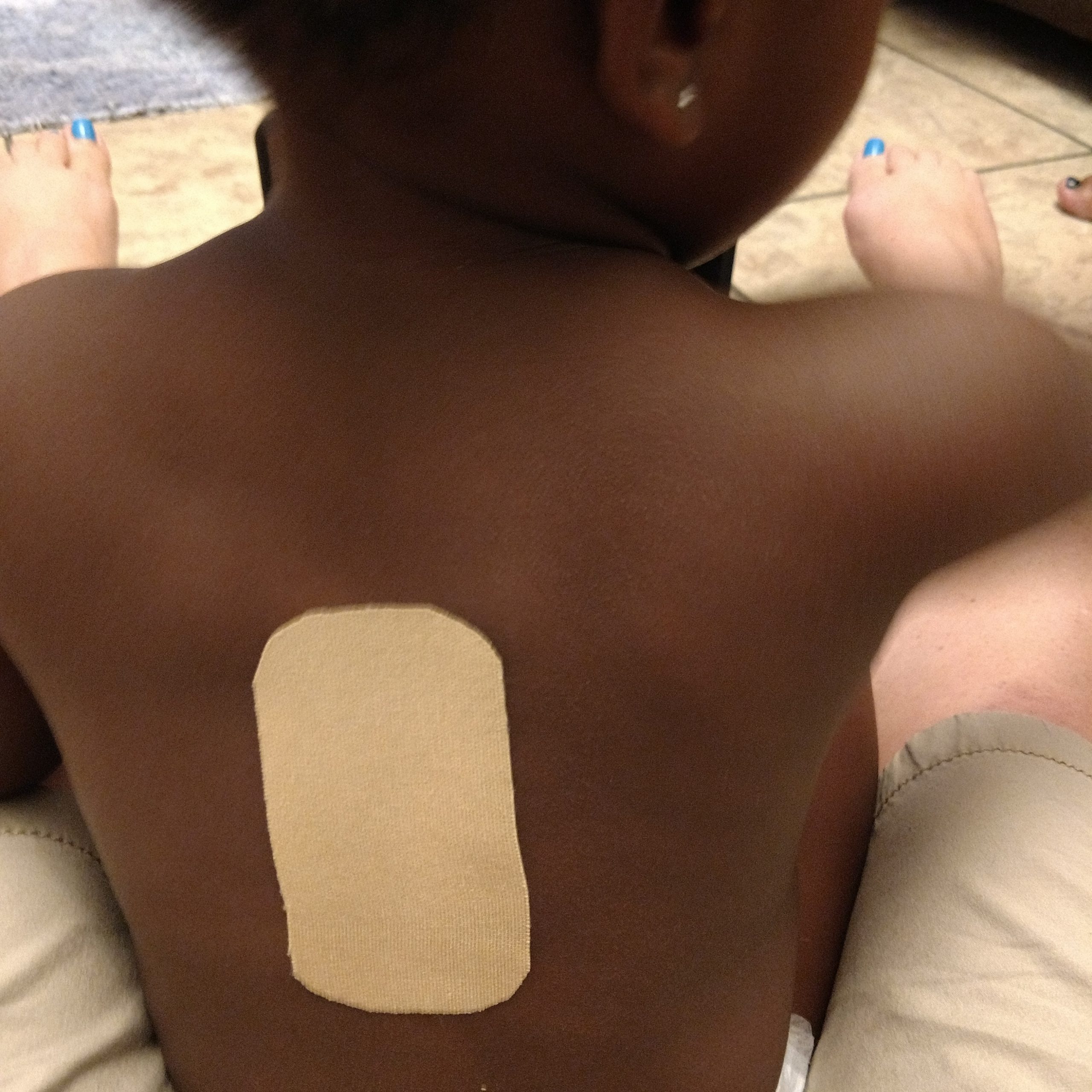Written By: Kristin Sanders, PT, MPT, PCS
 When treating your client have you ever felt like you could use more than two hands? Do you think that it would be super helpful for your clients if you could detach your hands to allow them to achieve Salience and Repetition as they practice outside of sessions? Me too, especially with my pediatric ‘kiddos’! While gaining hands and detaching them are not options, thankfully, a beneficial option is the treatment technique of applying kinesiology tape.
When treating your client have you ever felt like you could use more than two hands? Do you think that it would be super helpful for your clients if you could detach your hands to allow them to achieve Salience and Repetition as they practice outside of sessions? Me too, especially with my pediatric ‘kiddos’! While gaining hands and detaching them are not options, thankfully, a beneficial option is the treatment technique of applying kinesiology tape.
Kinesiology tape is not new! It has been used for over fifty years with advancements and modifications to provide optimal benefits in ever growing populations. Most therapists are familiar with application techniques for sports and orthopedics including rehabilitation after injuries, alignment for optional strength, swelling, and pain. So how do therapists use kinesiology tape with pediatric clients, especially for the purpose of habilitation? This requires therapists to focus on development of skills, particularly with children who are neurodiverse and may have an atypical neuromuscular system. While varying the application technique based on the goal that session, I always keep in mind one of the primary indications of kinesiology tape… increase proprioception ( “perception or awareness of the position and movement of the body”). When considering the principles of neuroplasticity and motor learning, facilitation to improve proprioception is key!
 Typically, therapists facilitate (“make an action or process easy or easier”) manually with their handling skills that assess and determine the force, size, and especially location to provide optimal input. For some kiddos, I apply kinesiology tape as a proprioceptive input for posture, gait, respiration, movement pattern, cue for a fine, oral, or gross motor skill only for during our session, which is helpful for certain families and venues of care. With these applications, the addition of client (pediatric or adult) activation in the area of increased awareness provides additional proprioception and strengthening. For others, kinesiology tape allows me to ‘send my hands’ home and out into the community. When caregivers can clearly see the location to provide additional proprioception and facilitation, their carryover effectiveness improves.
Typically, therapists facilitate (“make an action or process easy or easier”) manually with their handling skills that assess and determine the force, size, and especially location to provide optimal input. For some kiddos, I apply kinesiology tape as a proprioceptive input for posture, gait, respiration, movement pattern, cue for a fine, oral, or gross motor skill only for during our session, which is helpful for certain families and venues of care. With these applications, the addition of client (pediatric or adult) activation in the area of increased awareness provides additional proprioception and strengthening. For others, kinesiology tape allows me to ‘send my hands’ home and out into the community. When caregivers can clearly see the location to provide additional proprioception and facilitation, their carryover effectiveness improves.
When applying kinesiology tape to facilitate increased proprioception, it should be with the mantra of less is more. Just as with your manual handling skills, often providing too much input, support, and coverage is not beneficial to motor learning. Thus, the piece of kinesiology tape should be the size or smaller, if possible, than where you just assessed was best with your hands. The alignment of the tape and the stretch should be as similar to your handling as possible… keep in mind your goal of facilitation, not taking over or restraining. We want to achieve the ‘just right’ challenge to promote Use It and Improve It and Intensity.
Where do you feel an extra hand would be beneficial? Kinesiology tape application possibilities are endless and which ones you use most often will depend on your discipline, venue of care, and client population. Ready to learn more about kinesiology tape, especially in the pediatric population? Join me for my live stream, Kinesiology Taping Certification for Pediatrics, on September 29th. Can’t attend? Check out the recordings of this course and Kinesiology Taping for Respiratory, Oral Motor, and Speech Related Issues!
Visit summit-education.com for more information.
